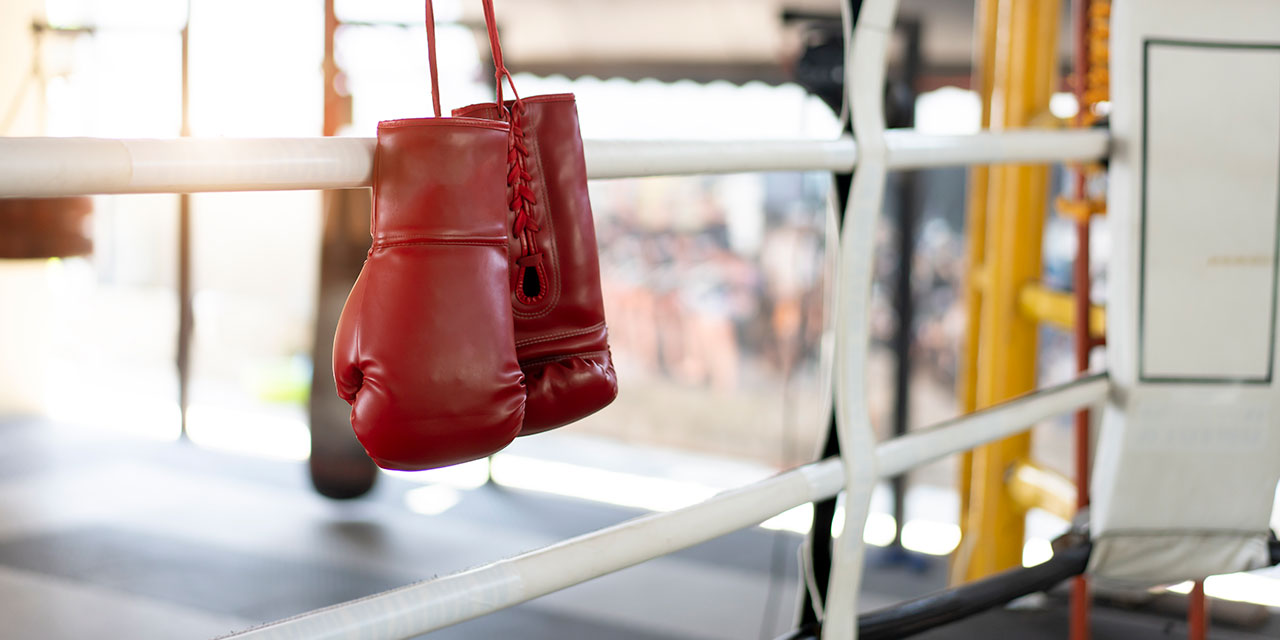
Hard Lessons from the Hurt Business: Boxing and the Art of Life, by Ed Latimore (Portfolio, 304 pp., $30)
Occasionally, an author who has learned deep and durable lessons emerges to share them with the rest of us. That’s what Ed Latimore has done with his remarkable new book, Hard Lessons From The Hurt Business: Boxing and the Art of Life.
I first encountered Latimore in 2019 through his posts on Twitter (now X), where he had carved out a niche as an astute observer of struggle, discipline, and self-mastery. His writing was unusually sharp, and when I learned about his background—an impoverished childhood in Pittsburgh’s public housing projects, battles with addiction, a professional boxing career, service in the Army National Guard, and eventual graduation from college—his insights clicked into place.
My own life bears some resemblance to his: I grew up in foster homes, joined the military at 17, struggled with alcohol, didn’t begin college until my mid-twenties, and also wrote a memoir at a relatively young age. Meeting Latimore and finding another person who had made it out gave me a kind of reassurance that is hard to articulate. This personal connection is one reason I find his book so compelling, though readers with different biographies will still find plenty to admire.
Latimore’s memoir begins in the Pittsburgh projects, where he was raised by a single mother and had only sporadic contact with his father. The early chapters are raw and sometimes brutal. In one of the book’s most harrowing passages, he describes witnessing the aftermath of his mother’s boyfriend beating his two-and-a-half-year-old sister with a metal coat hanger. These scenes are not presented for shock value. They are meant to show the environment that shaped him.
The book also offers glimpses into the kinds of moments that rarely appear in mainstream accounts of life in the inner city. In one unforgettable episode from eighth grade, Latimore brings a bag of sugar to school and pretends to sell cocaine. This provokes a fight with a school bully, leads to the author’s arrest for simulating the sale of a controlled substance, and ends with an officer uncuffing him and warning, “If you pulled that shit on the street, someone woulda shot you.”
Latimore credits the officer for using the incident to teach him a lesson. It’s a reminder that police officers are not merely law enforcers but also, at their best, moral instructors. The discretion of a good cop can save a young person’s future—a lesson worth remembering in an era when policing is often portrayed in the most negative light. Instead of funneling him into the juvenile justice system, these officers chose to deliver a hard warning that might have changed the trajectory of his life. Latimore’s story is a counterweight to the prevailing narrative that police presence is inherently harmful. Sometimes, the intervention of an authority figure is precisely what a troubled kid needs.
Hard Lessons from the Hurt Business sometimes moves too quickly past moments where readers might want to linger. This briskness is part of Latimore’s style. He lands his punches and moves on, leaving readers to absorb the impact.
Latimore’s observations about school carry this same quality. The classroom environment he describes was chaotic, not because most kids were troublemakers but because a handful could derail learning for everyone. As he notes, roughly 5 percent of the students accounted for nearly all suspensions. For this cohort, suspension wasn’t a deterrent but a badge of honor. Anyone who has spent time in such a school will recognize the problem: a well-meaning commitment to “inclusion” allows chronic disruptors to dominate the classroom and robs most other students of a chance to learn.
Latimore’s story challenges the belief, fashionable among many progressives, that programs for gifted students should be dismantled. He shows that such programs rescue talented kids like himself from dysfunctional settings and give them a chance to flourish. The curriculum at his middle school was watered down, and teachers passed every student regardless of their performance or behavior. This practice spared educators headaches, guilt, and confrontation, but it cheated ambitious students, allowing the least capable to advance while depriving the most capable of the challenges they needed.
The public library near his middle school became Latimore’s lifeline. It was his escape from a world that seemed determined to grind him down. Located just a short walk from school, it spared him the daily torment of the bus ride home, where insults, threats, and violence were routine. He spent hours there, lost in fantasy novels, Japanese culture, astrology, history—anything that offered a mental exit from his immediate surroundings.
Eventually, he tested into a gifted program that showed him what school could be. Once a week, a bus took him across town to a place where students cared about learning and didn’t have to worry about disruption or violence. No fights broke out. No one vandalized or stole his belongings. For the first time, he could raise his hand in class without worrying about retaliation. “I just wanted to learn and not be hassled,” he writes.
Those hours in the library and the gifted program planted a seed: where you start does not have to be where you end up.
Latimore is clear-eyed about his other possible path. The book offers a rare glimpse into the mindset required to succeed at crime, relating his encounters with drug dealers and hustlers. “I’ve met dealers of all different substances,” he writes. “My general experience has been that the harder the drug, the worse the human being is that deals it . . . Harder drugs are worth more money so the competition is tougher, and that requires a more dangerous person to succeed.” These observations are valuable because they demystify the criminal underworld without glamorizing it.
Later, after earning a degree, serving in the National Guard, and signing with Roc Nation Sports as a professional boxer, Latimore reflects on what he had lacked as a boy: “When I was younger, I believed that my biggest disadvantage was living in poverty. While it’s true that having more money allows you to take advantage of more opportunities, good parents make up for that. This is especially true living in a country like the United States, where opportunity is abundant.”
Latimore is admirably blunt about what he believes made the difference in his life. “I struggled with addiction, poverty, and identity for most of my adult life,” he writes. “I’m the first to say that personal responsibility matters, but I’d be foolish to ignore how much harder it is for kids to thrive without a stable, two-parent household. That matters more than money. That’s not opinion—it’s observable reality.” In an era when elite commentary often downplays the role of family structure, Latimore’s insistence on its importance is refreshing. His argument is not ideological but experiential, drawn from the hard evidence of his own childhood. His reflections on his own absent father, written from the vantage point of becoming a father himself, are among the book’s most moving passages.
Latimore deftly does what a good memoirist is supposed to do: juxtapose a series of details that, in their intensity and contradiction, give readers the sense that they are exploring the contours of a real-life, flesh-and-blood human being. The writer’s task is to compress this layering of impressions so that the reader comes to understand, “There’s more than one thing going on with this guy, and even he hasn’t realized it yet.”
The book is also an illustration of what art is for. True art transforms pain into something meaningful, even beautiful. Much of what makes it into a writer’s work arrives below the level of full consciousness, and that is as it should be. Latimore allows the material to speak, and the result is a story at once raw and redemptive. The book’s final chapters, in which Latimore, from the perspective of a mature and improbably successful man, reflects on the lessons he has learned, are among the most satisfying.
Hard Lessons From the Hurt Business reminds readers that the “hurt business” is not limited to the boxing ring. The real fight takes place in the heart and mind, in the daily effort to rise above adversity and choose a better path. Latimore’s account is both a testament to that struggle and an invitation to face it with courage.
Photo: seksan Mongkhonkhamsao / Moment via Getty Images
















